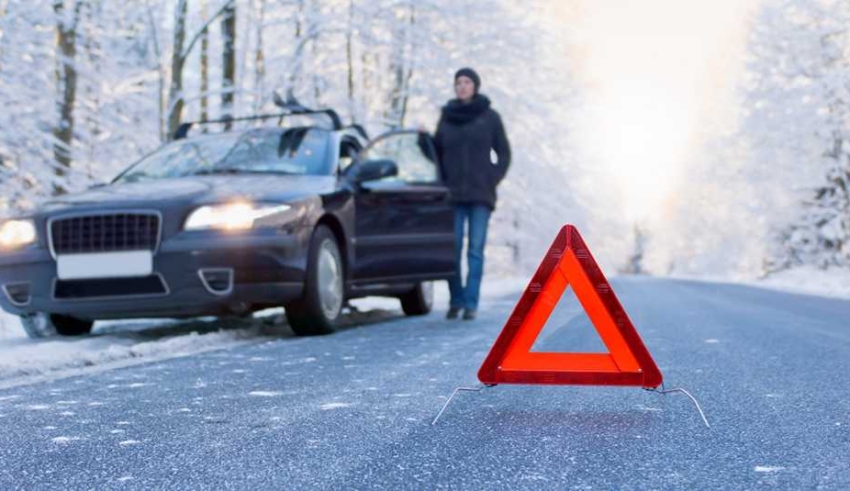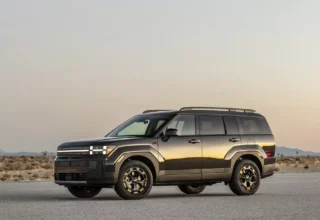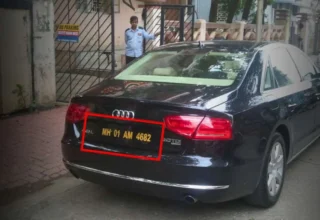
Car trouble never happens at a convenient time, but some breakdown scenarios create way more problems than others. The difference between stopping in a safe parking lot versus being disabled in a dangerous location can affect everything from how quickly help arrives to whether anyone gets hurt in the process.
Understanding which situations pose the biggest challenges helps drivers recognize when they’re in genuine danger versus just dealing with an annoying inconvenience. It also explains why some towing calls cost more and take longer than others.
Table of Contents
Highway Breakdowns During Rush Hour
Breaking down on a busy highway ranks near the top of worst-case scenarios. The combination of high-speed traffic and limited shoulder space creates immediate danger. Other drivers aren’t expecting a stopped vehicle, and even with hazard lights flashing, the risk of being rear-ended stays high until the car gets moved.
Rush hour makes this situation even worse. Stop-and-go traffic means drivers are distracted, looking at their phones, or not paying full attention to what’s ahead. The density of vehicles also makes it harder for a tow truck to reach the disabled car. What might normally be a 15-minute response time can stretch to 45 minutes or more when the tow operator is stuck in the same traffic.
The shoulder width matters too. Some highways have generous shoulders that provide decent space to pull completely out of traffic lanes. Others have narrow shoulders or none at all, forcing the disabled vehicle to sit partially in a travel lane. Police often get involved in these situations, sometimes requiring traffic control or even temporary lane closures so a tow truck can work safely.
Middle of the Night in Unfamiliar Territory
Breaking down at 2 AM on a dark road far from home combines multiple problems at once. The darkness makes everything harder and more dangerous. Other drivers have reduced visibility, tow operators have trouble seeing what they’re working with, and even simple tasks become more difficult without good lighting.
Being in an unfamiliar area adds another layer of complexity. Drivers don’t know the local towing companies, can’t judge which ones are reputable, and might not even know exactly where they are to give directions. Cell phone service might be spotty, making it harder to call for help or look up information.
The time factor changes response times significantly. Fewer tow trucks are on duty during overnight hours, and those that are working are often spread thin covering a larger area. What many people don’t realize is that having access to 24-hour emergency towing becomes critical in these situations, though response times will naturally be longer than during daytime hours when more operators are available.
Personal safety concerns increase dramatically in overnight breakdowns too. Waiting alone in a dark, unfamiliar location feels very different from being stuck somewhere during daylight. The decision about whether to stay with the vehicle or seek shelter nearby becomes more complicated when it’s dark and the surroundings are unknown.
Remote Rural Areas With Limited Services
Breaking down in a truly rural area, the kind where houses are miles apart and cell towers are scarce, creates unique challenges. Cell phone coverage becomes unreliable or nonexistent, making it difficult or impossible to call for help. Even if a call goes through, explaining the location becomes tricky without street signs, landmarks, or GPS coordinates.
Towing companies in rural areas often operate very differently from their urban counterparts. They might have only one or two trucks covering a massive geographic area. Response times can stretch to hours rather than minutes, not because the company is slow but simply because the distance is so great.
The problem gets worse when the breakdown happens on a side road or private property rather than a main highway. Tow operators might need directions to even find the location, and once they arrive, limited space or poor road conditions can complicate the actual towing process. Some rural roads aren’t wide enough for a tow truck to turn around easily, requiring careful planning just to position the truck.
Weather in remote areas poses extra risks too. A breakdown that would be merely annoying in town becomes potentially dangerous when temperatures are extreme and help is far away. Summer heat without air conditioning or winter cold without heat can quickly become a health concern, especially for children, elderly passengers, or anyone with medical conditions.
Tunnels and Bridges With No Shoulder
Tunnels might be the single worst place for a breakdown. There’s usually no shoulder space, meaning the disabled vehicle completely blocks a lane. Ventilation is limited, so exhaust fumes build up quickly. The confined space makes every driver nervous, and the echo effect makes it harder to communicate.
Towing from a tunnel requires extra precautions and often involves traffic control from police or tunnel authorities. The tow truck might not even be allowed to enter until traffic gets diverted or stopped. What should be a simple tow can take hours due to the logistics and safety protocols involved.
Long bridges present similar problems. Many have minimal or no shoulder space, and the vehicle sits exposed to wind and weather while waiting for help. Getting a tow truck onto a bridge during heavy traffic creates challenges, and the limited space makes the hookup process more difficult and dangerous.
The psychological factor shouldn’t be ignored either. Being stuck in a tunnel or on a bridge, unable to simply walk away to safety, increases anxiety for most people. The feeling of being trapped, even though help is coming, adds stress to an already difficult situation.
Extreme Weather Conditions
Snow and ice transform even simple breakdowns into complicated rescues. Tow trucks have trouble reaching the disabled vehicle, and once there, the hookup process becomes more dangerous and time consuming. Frozen components don’t want to move, straps and chains are harder to handle with gloves on, and footing is treacherous.
Heavy rain creates visibility problems and makes everything slippery. Flash flooding can turn a straightforward breakdown into a rescue situation, especially in low-lying areas or near streams. Tow operators have to assess whether it’s even safe to approach the vehicle or if waiting for water levels to drop is the smarter choice.
Extreme heat brings different challenges. Waiting in a disabled vehicle during a heat wave can become a medical emergency, especially if the breakdown happens in direct sunlight with no shade available. The urgency of the situation increases because it’s not just about getting the car towed, it’s about getting people to safety before heat exhaustion or heat stroke becomes a factor.
Wind events, whether from storms or just high wind days, make towing operations more dangerous. Loading a vehicle onto a flatbed becomes trickier when wind is pushing against it. Wheel-lift towing gets more complicated because wind affects the stability of the lifted vehicle during transport.
Construction Zones and Congested Urban Areas
Active construction zones combine multiple problems. Space is limited due to barriers and equipment, traffic patterns are confusing and constantly changing, and the presence of construction workers adds another safety consideration. Tow operators have to coordinate with construction crews and sometimes wait for equipment to be moved before they can even access the disabled vehicle.
Dense urban areas bring their own headaches. Parallel parked cars line both sides of the street, leaving barely enough room for normal traffic much less a tow truck. One-way streets mean the tow truck might have to approach from a direction that makes the hookup awkward or nearly impossible.
Parking restrictions in cities also complicate matters. The tow truck itself might not legally be allowed to stop in certain areas, forcing the operator to work quickly or negotiate with parking enforcement. The disabled vehicle might be blocking a bus lane, bike lane, or other restricted area, adding time pressure to an already stressful situation.
Why Location Matters So Much
The location of a breakdown affects everything from response time to final cost. Dangerous locations require extra safety measures, specialized equipment, or additional personnel. Difficult access points take more time and skill to manage. All of these factors explain why two seemingly similar tows can have very different price tags.
Knowing the risks associated with different breakdown locations helps drivers make better decisions in the moment. Sometimes it’s safer to nurse a failing vehicle to a better stopping point rather than pulling over immediately. Other times, the car needs to stop right away regardless of location. Understanding these scenarios helps drivers assess the situation and communicate effectively with towing services when they call for help.














